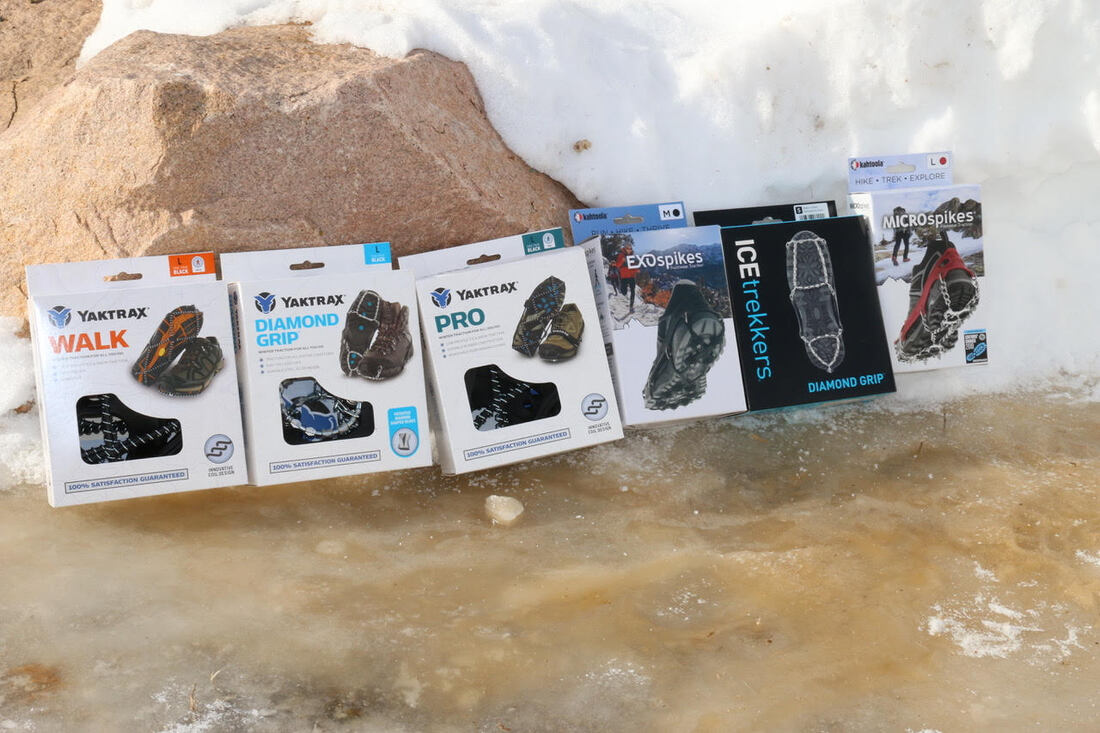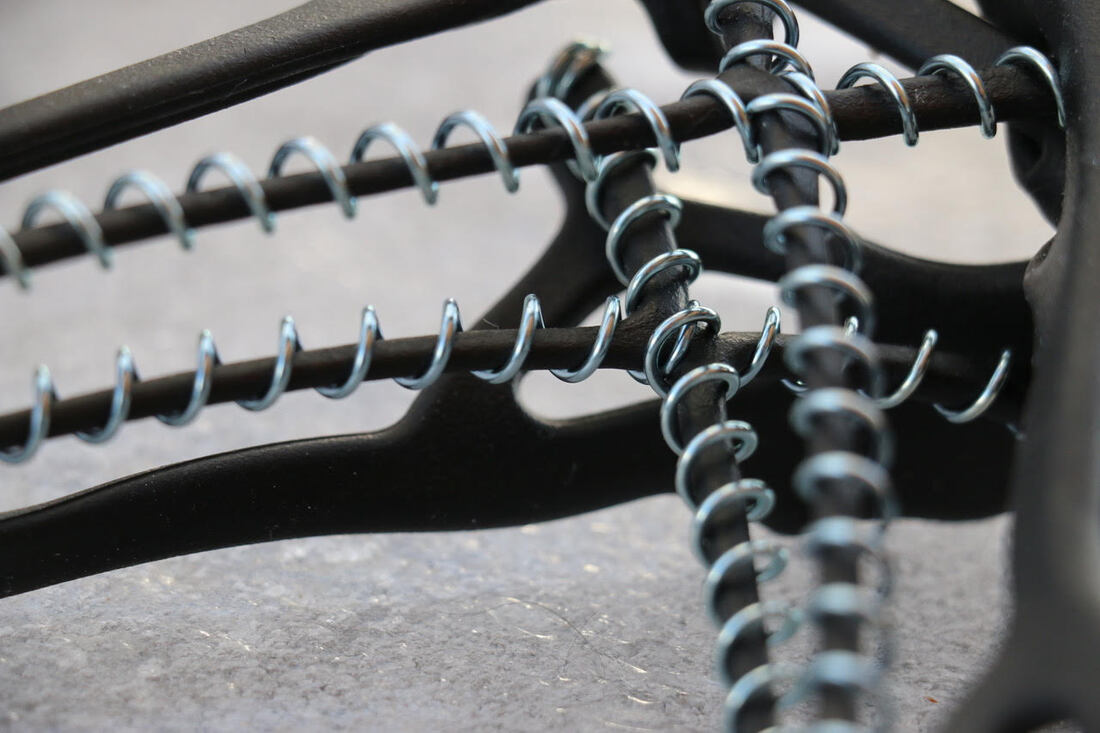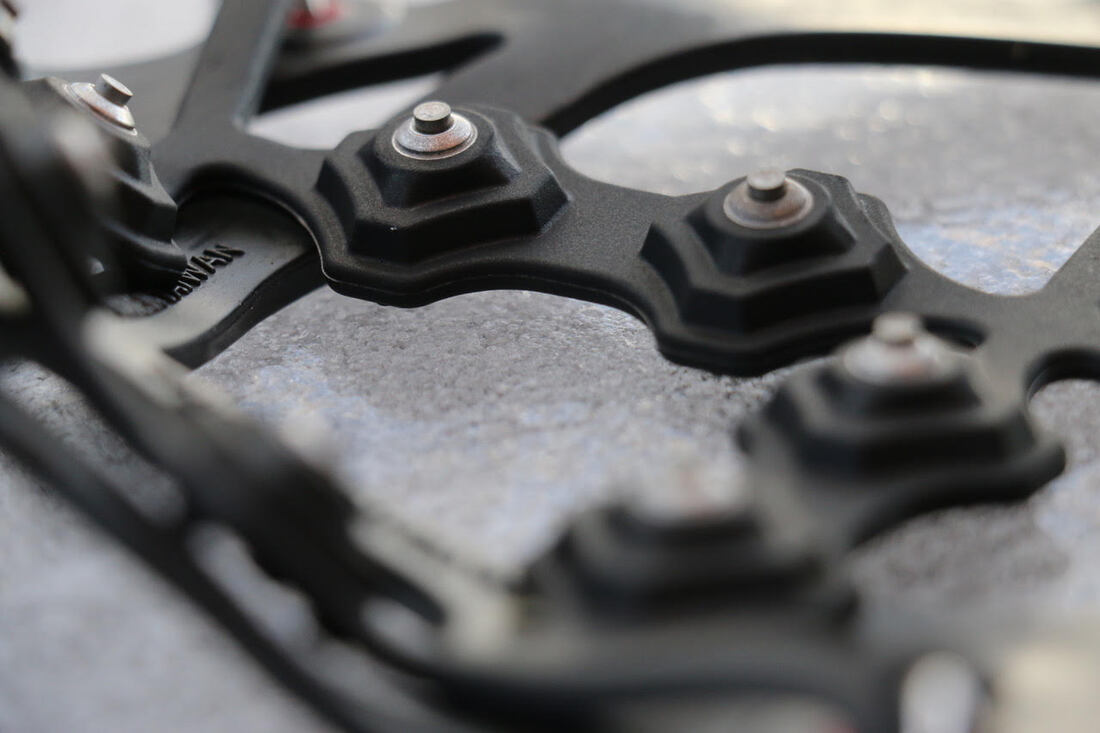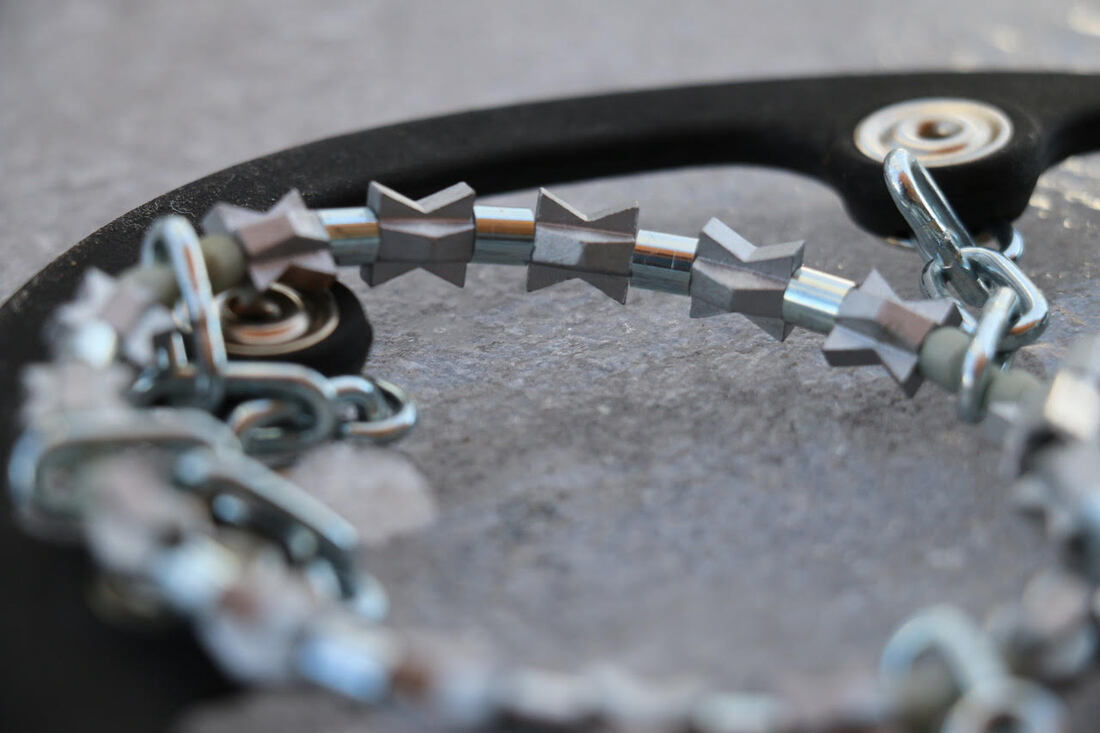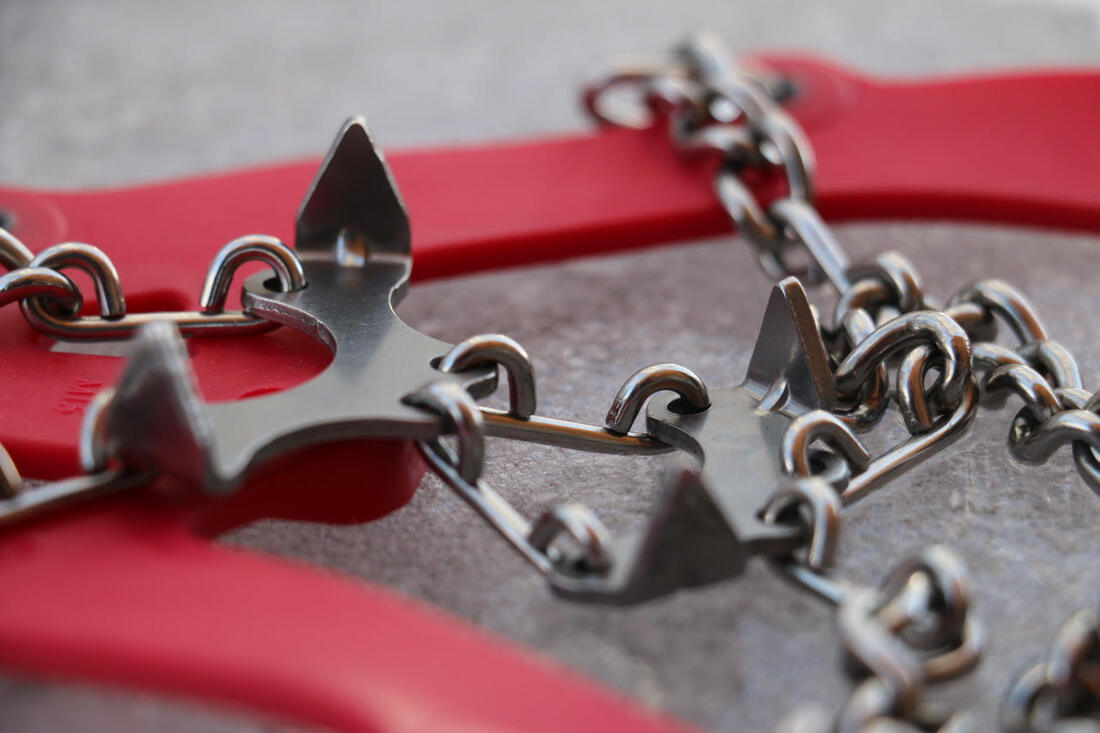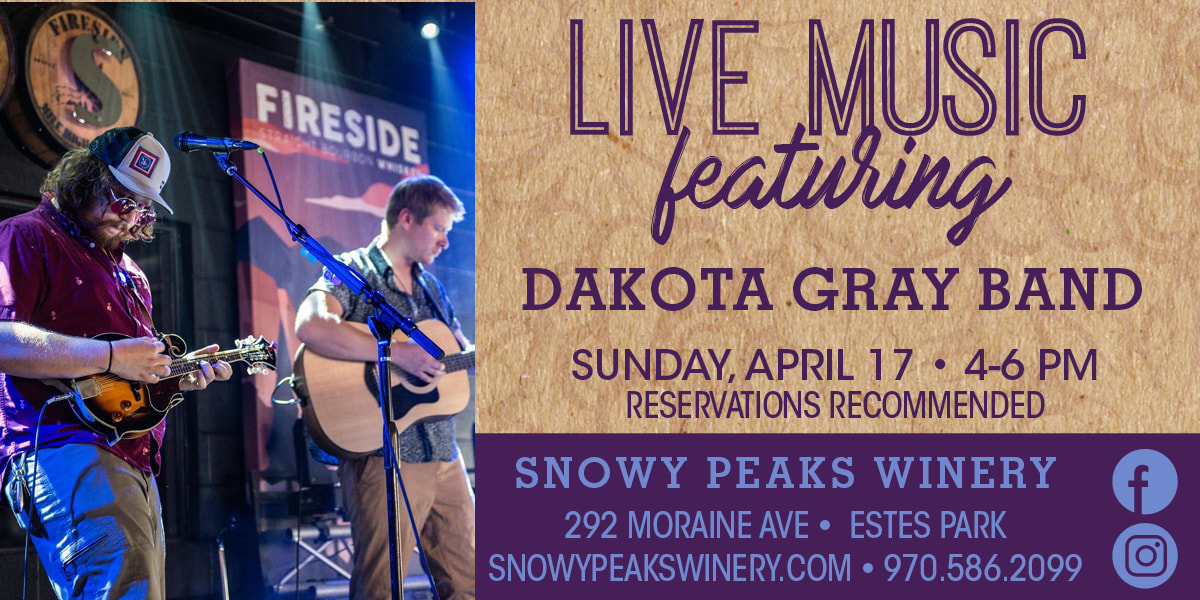|
editor's note: this story is pulled out in its entirety from the February/March edition of HIKE ROCKY digital magazine. For more information about the magazine visit this page by Murray Selleck, HIKE ROCKY'S equipment specialist HIKE ROCKY's gear reviews are unsolicited. With apologies to Paul Simon, when spring-like weather hits the Rocky Mountains, we are all just “slip-sliding away.” When winter snowfall transitions from fluffy powder to rock hard ice, each step can become treacherous. Freeze-thaw cycles, wind driven spindrift, even solar radiation on cloudy days create the perfect conditions for ice that can send us flying off our feet. Have you tried hiking up an icy trail without weighting your feet? The analogy of walking on egg shells is appropriate, as well. If we’re not careful with every step, ice will send us airborne. This wouldn’t be so bad except for the inevitable landing. This is where traction devices that you attach to your winter footwear come into play and save the day. Snowshoes, crampons, spikes, cleats, studs, coils… The choices for traction on your boots are many. Where do you begin? How do you choose? With every piece of equipment or clothing that you choose always begin with your intended use. Will you be using your traction device to negotiate icy sidewalks in town? Are you a runner maintaining your winter fitness running on trails or roads? Or will you be hiking towards the high alpine peaks of RMNP crossing frozen lakes and negotiating your way through iced over boulder fields? These three different scenarios show very different traction needs and wants. Knowing your intended use before you buy will help you make your decision. There are four basic traction designs. The one feature that holds true with each of the traction device models shown here is a flexible rubber frame or rand that stretches over your shoe’s toe box and around the heel with enough tension to hold it in place. Beyond this one shared feature, the traction offered is where the decision making begins. Wire Coils One of the more popular traction devices for walking and town use are the Yaktrax Walk ($19.95) or Yaktrax Pro models (29.95). These use a sturdy wire coil connected to its rubber frame. The wire coil offers low profile traction that allows for a natural walking gait. You won’t necessarily have to adjust your normal walking style or lift your foot any higher to clear the coil from the ground. This is definitely a consideration with traction devices that offer more aggressive or longer (taller) spikes The Yaktrax Walk is the most basic model. The Yaktrax Pro has an additional strap that fits over the top of your instep for additional retention and security. Yaktrax designs both models for walking or running. Tip: If you’re between sizes on any traction device try to go with the smaller size for better retention on your boots or shoes. Fitting them smaller does offer better retention but it may be a struggle to pull them on. If you use a larger size you risk a loose fit and the traction device might come off in the most inopportune time. Studs Kahtoola makes a model named EXO Spikes ($59.95) and while Kahtoola calls them spikes I think of them more along the lines of studs you might see on a studded car tire. The small, low profile tungsten carbide studs dig into ice and hard packed snow nicely. The wrap around rubber frame comes up and over the top of your footwear’s toe box and further up towards your instep to keep the traction device in place. More retention is nice. I like the low profile studs and they are built for action. With running shoes and or softer sole shoes you won’t feel any of the studs underneath your shoes with each weighted stride. This lets you think about the terrain you’re running on versus feeling any unnatural ridges or pressure points from spikes with each step. Of course, you’ll need to consider the depth of the studs and the amount of traction you require. On steeper terrain, they may not be enough but on modest hills while running or walking fast they are more than suitable. Tip: Using trekking poles or ski poles along with your traction device while running will help with stability and traction. Poles help propel you up hills faster and provide another point of stable contact while descending. Diamond-shaped rotating beads Ice Trekkers Diamond Grip ($49.95) and Yaktrax Diamond Grip ($49.95) are very similar to each other. Both use unique “diamond” shaped beads. The big difference here is the number of potential contact points and the fact that the diamond beads rotate on a small steel cable. (Of course they are not made of diamonds but their marketing guys worked late into the night on that name). The design of the beads are multifaceted like a diamond increasing the number of contact points with ice. Each time you put these on your winter footwear the position of the diamond studs changes. You aren’t using the same contact points time after time so longevity and durability are increased. Traction devices that use a fixed point of contact may dull out sooner than these that rotate. When weighted, the rotating diamond grips grab and hold ice securely. Tip: After use, it is best to air dry your traction device. Don’t pack them away into a stuff sack or some place where they can’t dry completely. Rust is generally not a problem out west but it does occur. Keeping your traction devices rust-free will help them last longer. Spikes Kathoola Micro Spikes ($69.95) and the Snowline Chanson Pro ($64.95) offer the most aggressive traction. The spikes will remind you of crampons used for glacier travel, or perhaps to some extent, even vertical ice climbing crampons minus the front points. The spike length is the most aggressive at 3/8 inch long or 1 centimeter. This doesn’t sound significant but when compared to all the others mentioned so far it is. These are perfect for more adventurous terrain with steeper ups and downs with significant ice conditions. You may have to think about how you walk to clear the length of the spikes as your foot strides forward. There is some getting used to them the first time you use them. If you drag your feet the spikes could catch giving you that feeling of stubbing your toe against a rock or root on a summertime hike. You don’t want your traction device to be the cause of a fall… talk about irony, defined! Another cautionary note is being aware that in certain snow conditions snow or ice can accumulate under your foot. This can also happen with snowshoe crampons and metal edges of cross country skis. When the snow has become wet the metal traction device, snowshoe crampon, or metal edges of your skis has remained cold and a clump of snow can either ball up or ice can form on this metal reducing your traction. The easy fix is to tap your foot, snowshoe, or ski with a pole and break the packed mess free (you do risk breaking your pole if you whack too hard). Or, preventing this icy buildup in the first place can be done with spray- on glide wax made for xc skis. Spray the wax on and let it completely dry before you use them. Another small issue that can happen over time is the spikes will become dull with use. A traction device with dull spikes won’t dig in as easily. The good news is you’re using your spikes often. That means you’re getting out. Well done! To help prolong the life of your spikes take a file to them once in awhile. A little maintenance with a file to keep the spike points sharper is smart. Ice climbers do this often to their ice axes and crampons. Why can’t you with your traction device? Tip: With all traction devices centering them on the soles of your footwear is important. You can reduce the chances of breakage or premature wear and tear with a correct fit and centering them correctly on your boots or shoes. Rocky Mountain Day Hikes/HIKE ROCKY magazine contributors’ preferences We did an informal pole with our RMDH fellow contributors to see which brand and style of traction devices they use. Here are their preferences: Marlene Borneman: Kahtoola Microspikes; Dave Rusk & Barb Boyer Buck: Snowline Chainsen Pro; Rebecca Detterline: Yaktrax “Ice Trekkers;” and, Chris Reveley, uses two brands: XTR Extreme Outdoor Traction and a traction device from Hillsound. The takeaway from this? Personal preferences always rule the day. One person’s day of confidence is another person’s day filled with “slippin’ and a sliding!” 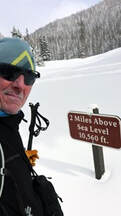 Murray Selleck moved to Colorado in 1978. In the early 80’s he split his time working winters in a ski shop in Steamboat Springs and his summers guiding on the Arkansas River. His career in the specialty outdoor industry has continued for over 30 years. Needless to say, he has witnessed decades of change in outdoor equipment and clothing. Steamboat Springs continues to be home.
0 Comments
Leave a Reply. |
Categories
All
|
© Copyright 2025 Barefoot Publications, All Rights Reserved

